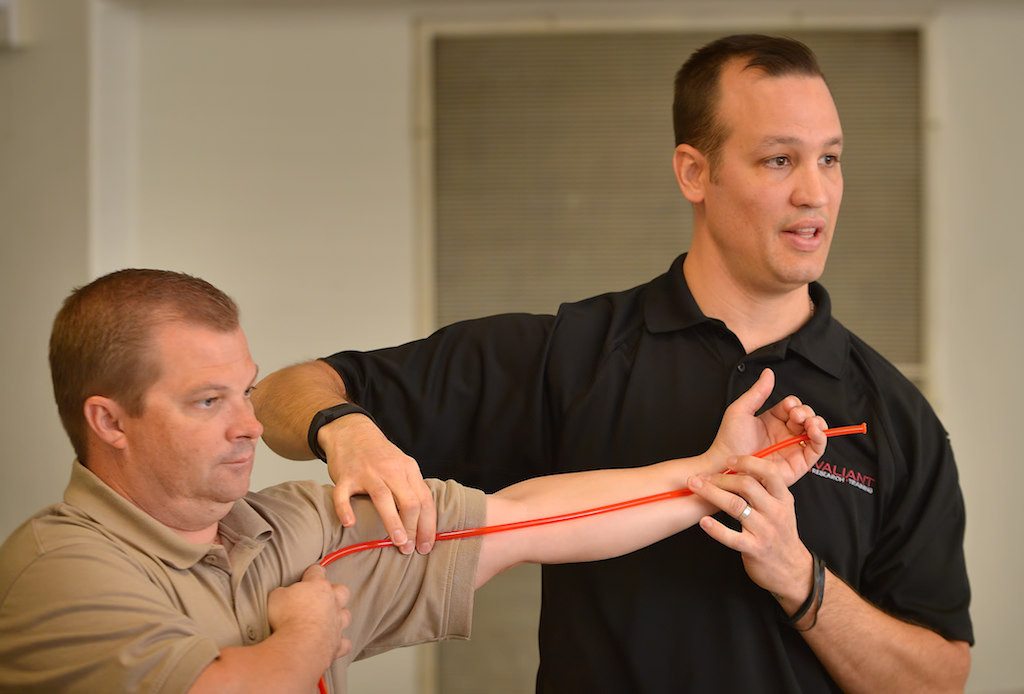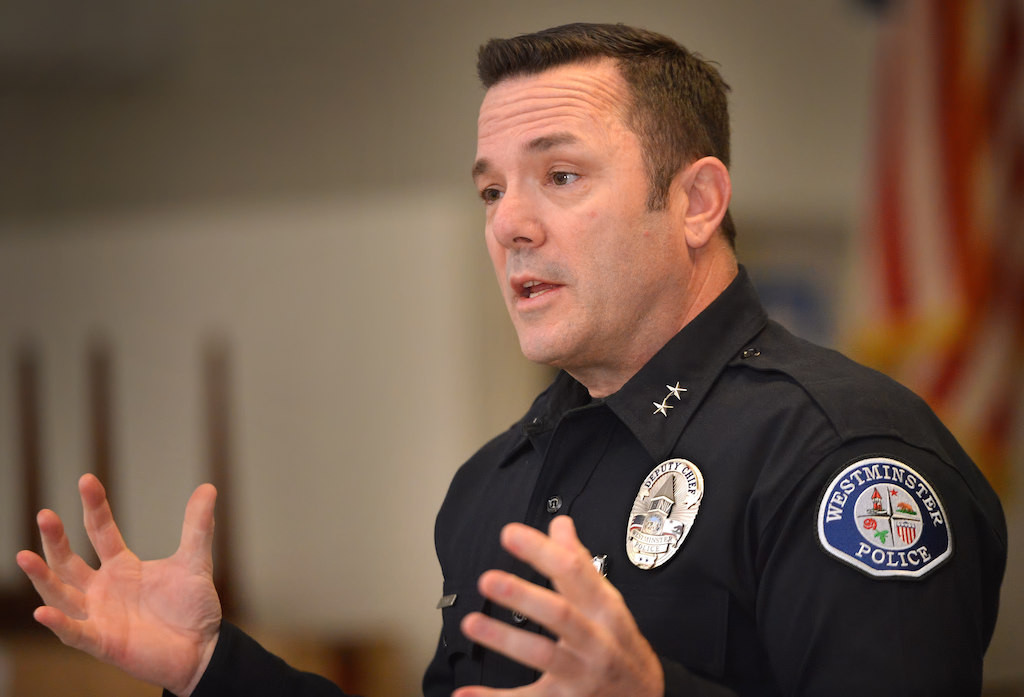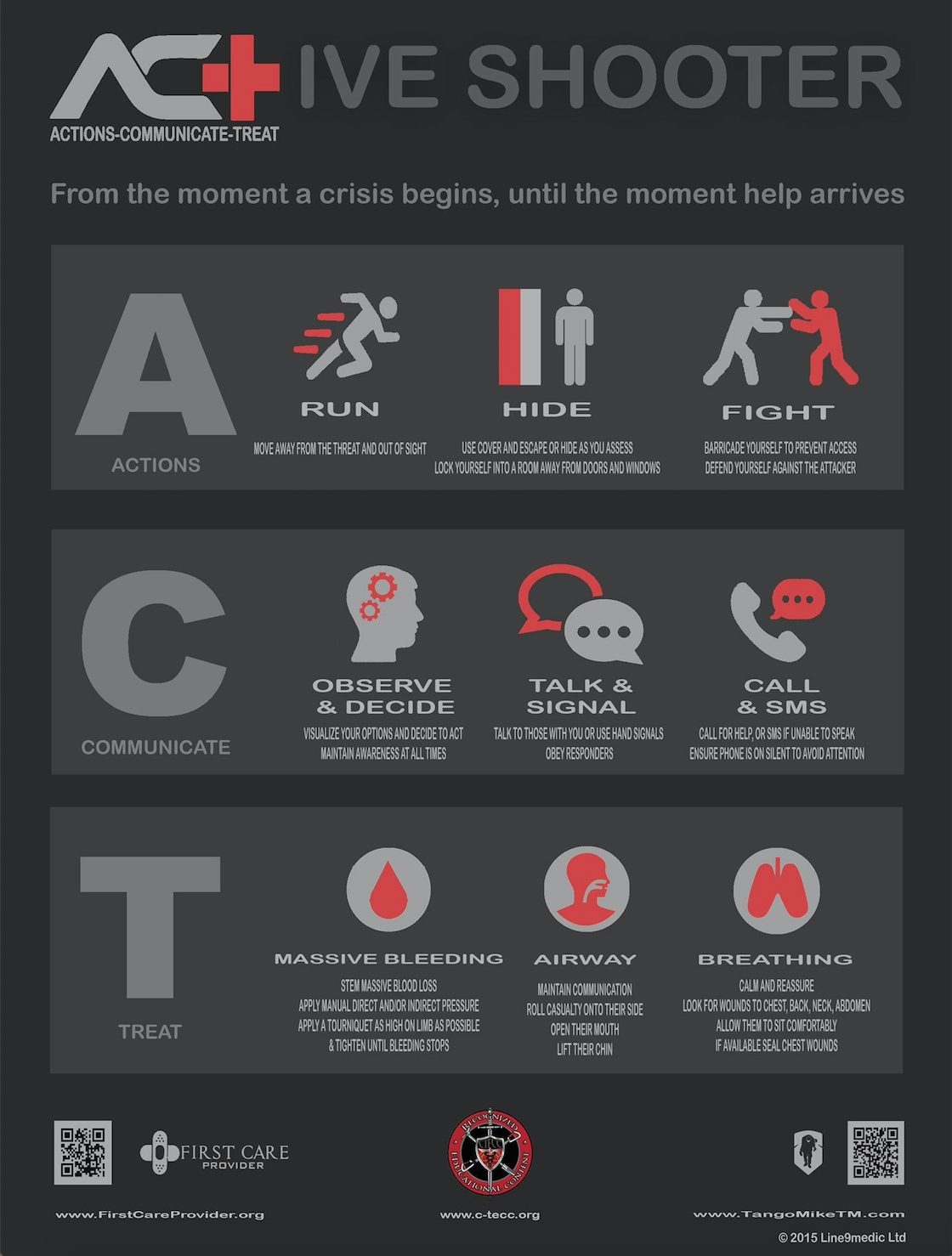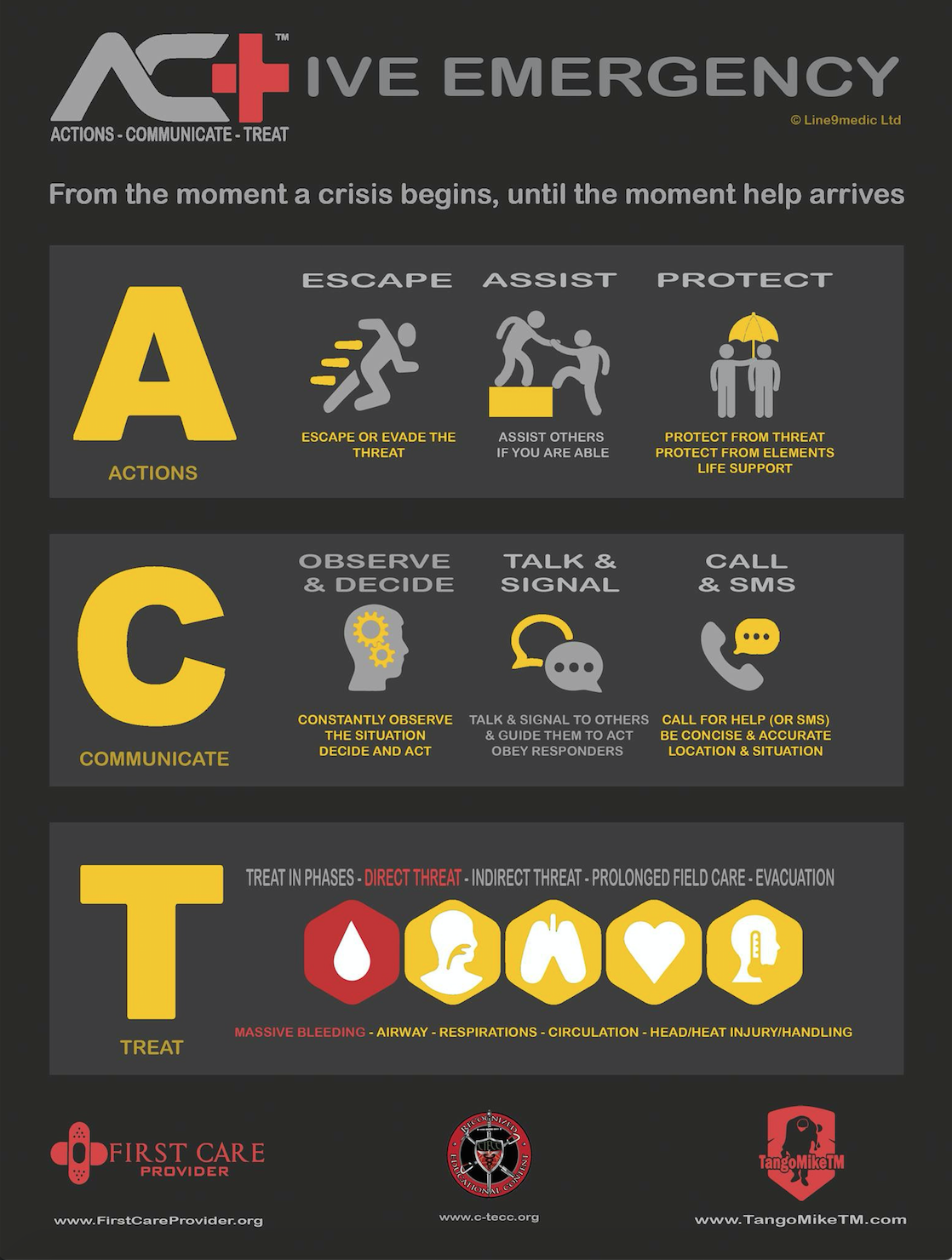Fourteen minutes was the best-case scenario.
When a husband-and-wife team of terrorists opened fire at a holiday party in the Inland Regional Center in San Bernardino in December, the police SWAT team was already geared up and somewhat close.
“Their response couldn’t have been any better,” said Dr. Joshua P. Bobko, assistant professor of emergency medicine at Loma Linda University, a reserve officer with Westminster PD and a medic with Los Angeles FBI SWAT. “They did everything right and it still took 14 minutes.”
Response takes time.
Time for the call to come through, time to arrive on scene, time to stage and set up before going in and facing off with potentially armed subjects.
Time that, in some cases, people don’t have.
Fourteen people were killed and 22 injured in that Dec. 2 attack — the deadliest shooting since the 2012 Sandy Hook Elementary massacre.
That day in December further underscored the stark reality of traumatic events: Sometimes the best chance of making it out alive is in the hands of fellow survivors.
While much emphasis is placed on what to do in an active shooter scenario, it is less common to train civilians how to handle the aftermath.
“People want to help people,” Bobko said. “The effort should be put into recognizing who needs what kind of treatment and who doesn’t.”

File photo: Todd Baldridge, MPD, EMT-P, left, and Joshua Bobko, MD, demonstrate to a group of teachers from Westmont Elementary the location of the brachial artery during a first responder training seminar at their school in Westminster.
Photo by Steven Georges/Behind the Badge OC
Bobko, fellow Westminster PD Reserve Officer and Orange County Fire Authority paramedic Todd Baldridge and paramedic and Naval Special Warfare (Ret.) veteran Bill Harris founded the nonprofit First Care Provider to address this need.
More than a year ago, they partnered with leaders at the Westminster PD to train local school teachers, city employees and Police Explorers on how to respond to a traumatic event, whether it be a shooting, major earthquake or serious injury.
“Everyone is now interested in filling the gap between the event and the emergency response,” Bobko said. “We know that this training can be retained and we know that it’s effective.”
The training focuses on getting civilians comfortable with assessing an emergency and providing care until help arrives.
First -care providers learn to handle massive bleeding or amputated limbs, but they also learn how to recognize someone who can’t be saved.
The training is simple, easy to retain and, more importantly, it can save lives.
“The only logical way to effect change is to effect change at the ground level,” Bobko said. “That’s where First Care Provider comes from.”
The power of training
Here’s the scenario: An earthquake has devastated the Westminster Mall.
Storefronts are destroyed and many of the shoppers inside are severely injured, some dying.
A group of teachers, parents, registered nurses, city employees, police explorers and mall security officers are the only immediate help available for victims of the quake.
Who would save lives? Who would freeze?
Bobko, Baldridge and Westminster PD Acting Chief Dan Schoonmaker ran the live-action scenario on a Wednesday in June in an empty storefront at the Westminster Mall.
The trained group — the teachers, city employees and explorers — was evaluated against nurses, mall security officers and a group of volunteer parents.
Members of the Orange County Fire Authority served as the baseline for the experiment, tending to every victim’s needs in about four minutes.
When the teachers entered the store, life-size mannequins with oozing wounds drew their attention first.
They calmly assessed the situation, used their training to mend wounds, stop bleeding and save earthquake victims.
“They taught us exactly what to care about first so we knew exactly what to look for,” said Berri Williams, a teacher at Westmont Elementary. “I knew what to do. It was instinctual.”
The trained civilians finished treating the victims just seconds behind the firefighters.
The First Care Providers knew how to properly use a tourniquet, check for airway obstructions and treat severe puncture wounds and lacerations.
“They did an amazing job,” Bobko said. “They did exactly what we thought was going to happen and proved us right.”
Those who didn’t go through the training, including registered nurses, had a different experience — none successfully completed the scenario.
Some wandered the room looking uncertain and afraid.
Others nervously laughed as actors called for help and mannequins squirted red liquid meant to mimic blood.
The nurses fared the best among those who hadn’t received First Care Provider training, but admitted they felt unprepared.
“We are so used to having equipment to rely on that you don’t know what to do in a situation like that,” said Hiram Diaz, a registered nurse.

File photo: Acting Chief Dan Schoonmaker addresses teachers from Westmont Elementary at the start of a First Responder training seminar at their school in Westminster.
Photo by Steven Georges/Behind the Badge OC
Three Westmont parents who went through the exercise took several minutes to adjust to the scene before they started trying to help.
They didn’t know where to begin.
“I felt myself panic,” said Patricia Singer.
The scenario vividly illustrated the importance of the training and set Westminster PD and First Care Provider on the path to educate others.
“When you’re not trained, there’s a hesitancy to act,” Bobko said. “People are afraid that they are going to make it worse and they don’t know what to do.
“When you have some training you’re more willing to act and you have developed independent problem-solving skills.”
Moving to educate
Westminster PD was the first agency in Orange County to implement this kind of training for civilians, but the idea is gaining traction locally and nationally.
First Care Provider founders have lectured at the International Disaster Conference in New Orleans, the Business Continuity Institute in London and the EMS World Expo.
Bobko and Baldridge on Feb. 2 will host a training seminar in Westminster for several west Orange County police departments, including Fountain Valley, Seal Beach and Cypress.
First Care Provider has also taken its course to Mission Viejo, Rancho Cucamonga and the League of Cities, which included several Inland Empire municipalities.
“People are starting to become interested now,” Bobko said.
The next step, Bobko said, is getting various agencies to buy in and equipping public places with the necessary gear, such as tourniquets and compression bands.
“We want to raise awareness and provide a workable model for groups, organizations and jurisdictions that need a solution with limited resources and a limited budget,” Bobko said. “With just a little bit of intervention at the time somebody is hurt, you can keep people alive.”
Visit firstcareprovider.org to learn more or to donate to the nonprofit.
 Behind the Badge
Behind the Badge




